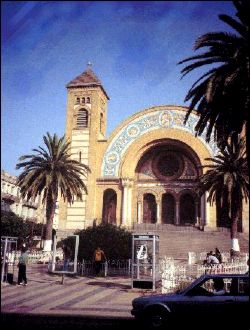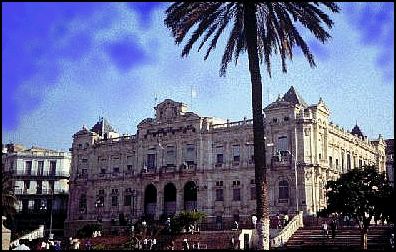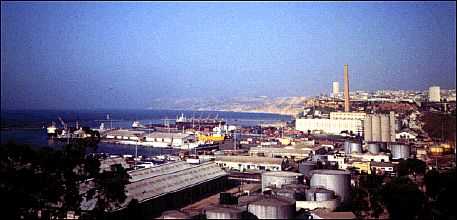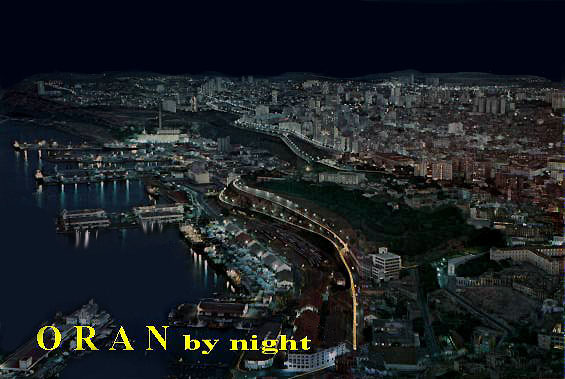It seems that the name "Wahran"(Oran in Arabic) comes from the Arab
word "wahr" (lion) and its duel (two) Wahran (two lions). The legend
tells that in the period (about the year 900), there were again lions
in the area. The two last hunted lions were found in a mountain near
Oran and which is so-called " lions' mountain ". There are, ahead the
Oran's city hall, two great statuses symbolizing the two lions.
A general map of North Africa with Oran circled in red

With a population of one Million Oran is Algeria's second largest city
and one of the country's busiest ports as well as being a major trading
and industrial centre. The town was founded by Andalusian (Spanish)
seamen in AD937 and flourished under Zianid rule, developing strong
trading ties with Spain, which eventually led to Spanish occupation
from 1509 to 1708 when Oran was captured by Ottoman forces. The Spanish
recaptured the city two years later but withdrew after an earthquake
destroyed most of the city in 1790. French colonial armies occupied
the city in 1831. During the last half of the 19th century, the
European influence over the city became manifest in new constructions.
Nobel prize-winning novelist Albert Camus born in Mondovi (Algeria)
used the city as the setting for the one of his greatest books, The
Plague. French fashion designer Yves Saint Laurent was also born in
Oran. After independence in 1962 over 200,000 European residents
abandoned Oran, leaving it an empty shell. It took years for the city
to revive, but today Oran has regained its place as one of Algeria's
most important cities.
The Jeanne d'Arc's square

"Dar el Mir antah Esbouha". The city Hall. La place d'armes avec tous
les terminus des autobus d'Oran, à droite il y a l'Opéra, et de
l'autre côté un cinéma "Le ROYAL" ainsi qu'un Hôtel de luxe
"Le Martinez".

" TAHTAHA avenue " with in the background the Sidi Abdel-Kader mount
(or Murdjadjo) with Santa-Cruz, le Belvédère etc...." Tahtaha " avec
sa ribambelle de Cafés Maures, qui se transforment tous, durant le
Ramadhan en marchands de Zlabias et Chamias. M'din Ejdidah avec tous
ses Bains Maures, Hammam Es-Saa, Hammam Chadli etc....

"Meria" The Harbor, with in the background the "wali sidi M'hamed"
, "Cueva del Agua" and the famous tall Cheminee







